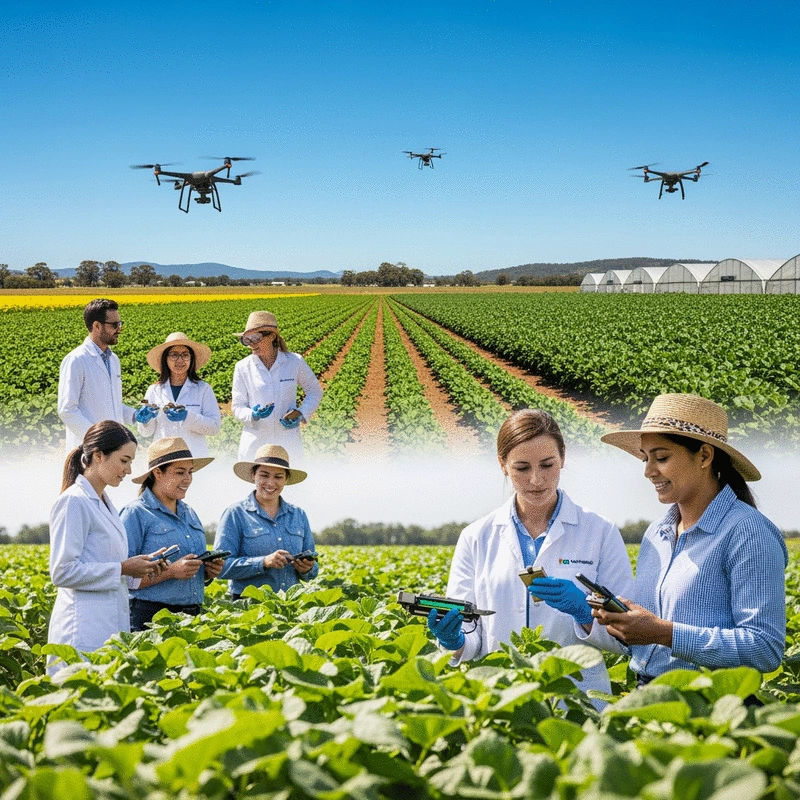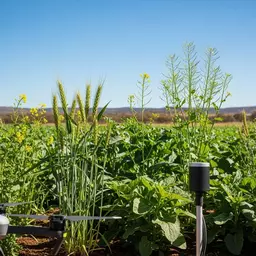Genetic Innovation: Key Techniques
- Genetic Engineering
- Molecular Breeding
- Traditional Breeding
As the world grapples with the challenges of climate change and food security, the role of genetic innovation in agriculture has never been more crucial. This article delves into how cutting-edge genetic technologies can reshape sustainable farming practices, ensuring resilience and productivity for future generations.
Genetic innovation is transforming Australian agriculture by enhancing crop resilience, improving resource efficiency, and securing food supply. Below are key areas and their impacts. To learn more about specific applications, consider exploring plant science advances in Australia.
Genetic innovation plays a crucial role in the evolution of sustainable agriculture. It encompasses various techniques that enhance crop resilience, yield, and adaptability to changing environmental conditions. By integrating advanced genetic technologies, we can pave the way for agricultural practices that not only support food security but also promote long-term environmental health. In Australia, where agriculture is a significant part of our economy, these innovations can help us tackle challenges such as climate change, pest pressures, and soil degradation.
As someone deeply involved in the field of plant science, I see the potential of genetic innovation as a bridge between modern challenges and sustainable solutions. The importance of these technologies cannot be overstated—they represent a pathway to greater efficiency in food production, helping us meet the demands of our growing population.
Genetic innovation refers to the use of scientific techniques to alter the genetic makeup of plants and crops. This may include methods such as genetic engineering, molecular breeding, and traditional breeding approaches. The goal is to create plants with desirable traits, such as increased resistance to diseases, improved nutritional content, and enhanced growth rates. These advancements are essential in addressing the increasing food security concerns facing our world.
By focusing on genetic innovation, we can create agricultural systems that are not only productive but also sustainable, safeguarding our ecosystems for future generations. This aligns perfectly with the mission of Plant Frontier Insights, where we strive to disseminate knowledge that empowers researchers and sustainability professionals. For example, understanding sustainable pest control in Australia is critical for protecting these genetically enhanced crops.
In recent years, genetic engineering and biotechnology have made significant strides in transforming Australian farming. With cutting-edge techniques, farmers are now able to cultivate crops that are more resilient to local pests and diseases. Innovations such as CRISPR gene editing allow for targeted modifications that enhance specific traits without introducing foreign DNA.
As we witness these transformative changes, it's important to recognize the collaboration between researchers, policymakers, and farmers. At Plant Frontier Insights, we champion these partnerships, aiming to share insights that promote agricultural resilience across Australia.
The link between genetic modifications and food security is a pressing topic in today's agricultural discourse. As the global population continues to rise, the demand for food will only intensify. Genetic innovations can help increase the efficiency of food production systems, which is vital in ensuring that everyone has access to nutritious food.
By investing in genetic technologies, we are not just enhancing agricultural practices; we are also securing the future of food availability. It is an exciting time for agricultural science, and I believe that supporting these innovations will be pivotal for Australia's long-term food security.
How do you perceive the impact of genetic innovation on sustainable agriculture? Do you believe these advancements can truly secure our food systems in the face of climate change? Share your insights below:
As we dive deeper into the world of genetic innovation, it’s essential to recognize the immense potential for investment in this field. The intersection of sustainable agriculture and genetic technologies is increasingly becoming a focal point for investors, especially in Australia. With the challenges posed by climate change and food security, it’s clear that supporting startups in this arena can lead to significant advancements that benefit both the environment and society.
In summary, here are some key takeaways regarding the investment landscape:
These factors contribute to a robust investment climate within the agritech sector, making it an exciting time for stakeholders looking to make a lasting impact.
Understanding the nuances of sustainable agriculture and genetic technologies is crucial for anyone looking to invest in this area. Genetic innovations not only enhance crop yields but also ensure that farming practices can adapt to the ever-changing environment. Here are some essential insights:
By recognizing these key takeaways, investors can make informed decisions that align with their values and the pressing needs of our agricultural systems.
As we look ahead, the future of investment in Australia’s agritech sector appears bright. With a strong push towards sustainability and innovation, we can anticipate a wave of startups that not only aim for profitability but also prioritize ecological balance. This dual focus on financial and environmental returns creates a compelling narrative for investors.
In my experience at Plant Frontier Insights, I’ve witnessed firsthand how collaboration among researchers, investors, and entrepreneurs can lead to transformative outcomes. I urge potential investors to explore this thriving ecosystem and consider the positive impacts their investments can create for Australia’s food systems and ecosystems. For more detailed insights into advanced genetic techniques, consider reading about CRISPR in Australian crop breeding.
As the agritech landscape continues to evolve, there are numerous opportunities for both investors and entrepreneurs to get involved. Whether it's through direct investment or launching a startup, the path to contributing to sustainable agriculture is open and ripe for exploration.
By taking these steps, you’ll not only support the agritech ecosystem but also play a vital role in shaping a sustainable future.
Networking is a powerful tool for anyone interested in the agritech sector. Connecting with industry leaders can provide valuable insights and open doors to collaboration. Here are some resources to consider:
These opportunities can significantly enhance your understanding and connections within the sector, ultimately leading to greater impact.
Research institutions play a critical role in driving innovation within the agritech sector. By collaborating with these entities, both investors and entrepreneurs can benefit from cutting-edge research and technology. Consider the following options:
These collaborations not only foster innovation but also ensure that we are tapping into the best scientific resources available to enhance agricultural practices.

 As the agricultural landscape in Australia evolves, the role of genetic innovation tools becomes inc
As the agricultural landscape in Australia evolves, the role of genetic innovation tools becomes inc
 As the agricultural landscape in Australia faces mounting challenges, understanding effective crop p
As the agricultural landscape in Australia faces mounting challenges, understanding effective crop p
 As Australia faces growing agricultural challenges, the significance of biosecurity cannot be overst
As Australia faces growing agricultural challenges, the significance of biosecurity cannot be overst
 As we delve into the intricate world of biosecurity, consider this: the health of Australia’s ecos
As we delve into the intricate world of biosecurity, consider this: the health of Australia’s ecos